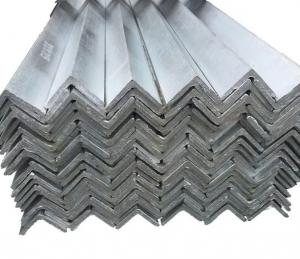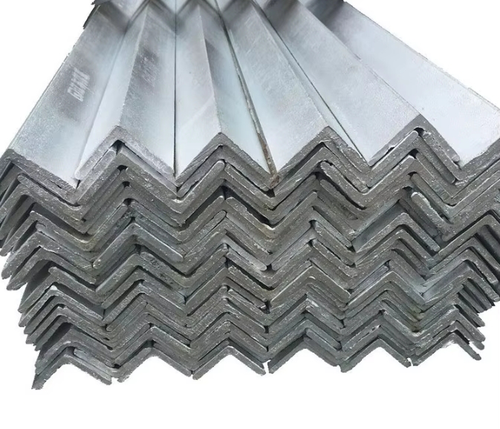ms equal angle bar angle steel angle iron black galvanized angle bar
- Loading Port:
- Tianjin
- Payment Terms:
- TT OR LC
- Min Order Qty:
- 25 m.t.
- Supply Capability:
- 200000 m.t./month
OKorder Service Pledge
OKorder Financial Service
You Might Also Like
Specification
We supply ms equal & unequal angle bar, channel bar,jis channel, upn, steel i beam,h beam, ipe, ipeaa, steel sheet pile, flat bar, hollow section, tmt bar, wire rod, binding wire, wire mesh, hrc, CRC, gi coil, ppgi, roofing sheet, chequered coil & plates, medium plate, scaffolding systems, prefabricated container houses etc. Also for metal & steel processing.
If you are in the market for any steel products, please feel free to contact us.
Steel Angle is one of the most popular hot rolled, low carbon steel shapes used in manufacturing, fabrication, and repair projects. From trailers to truck beds, farm implements to construction equipment, steel angle has thousands of uses and applications. Its 90 degree angle shape adds strength and rigidity to any project for a lower price compared to other shapes and types of metal. It is easy to weld, cut, form and machine. Rcjs steel stocks hundreds of sizes of steel angle that you can buy online in ready to ship precut or mill lengths or you can order just what you need custom Cut to Size in small or large quantity at wholesale prices.
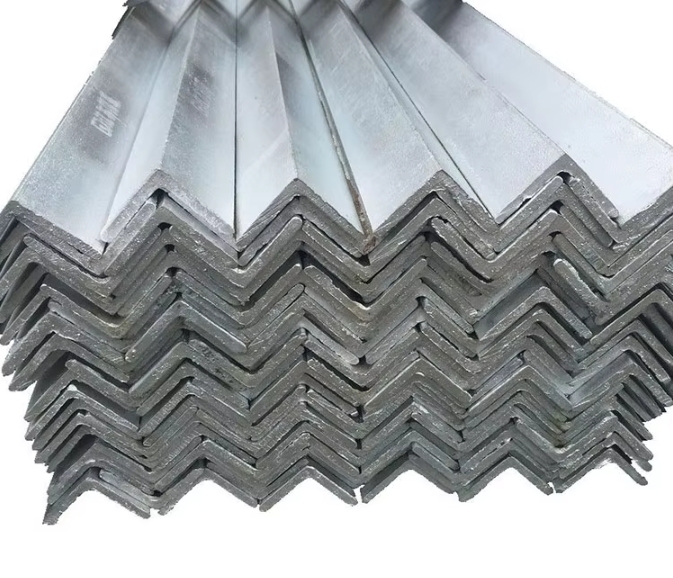
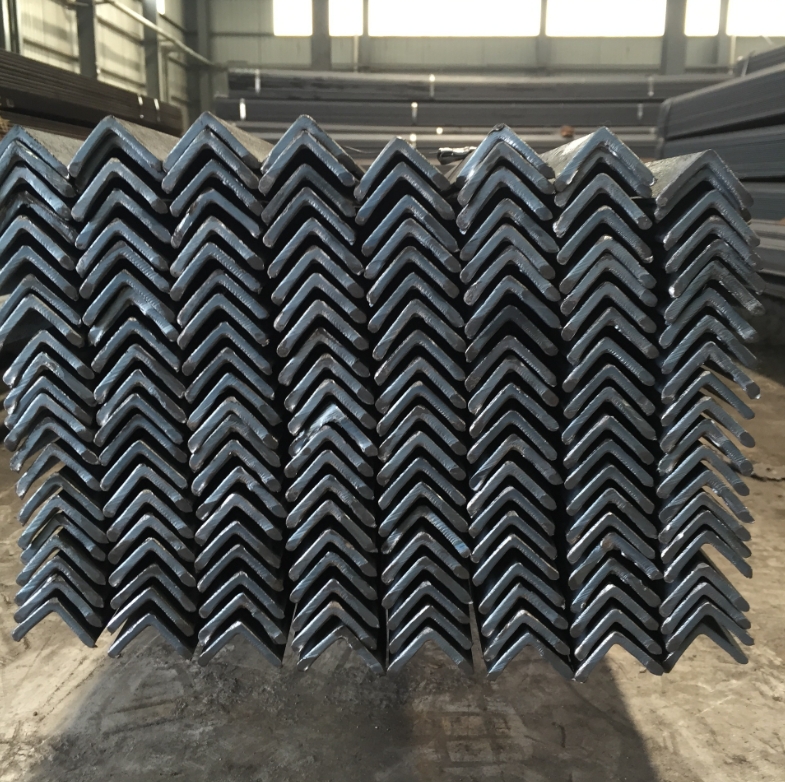
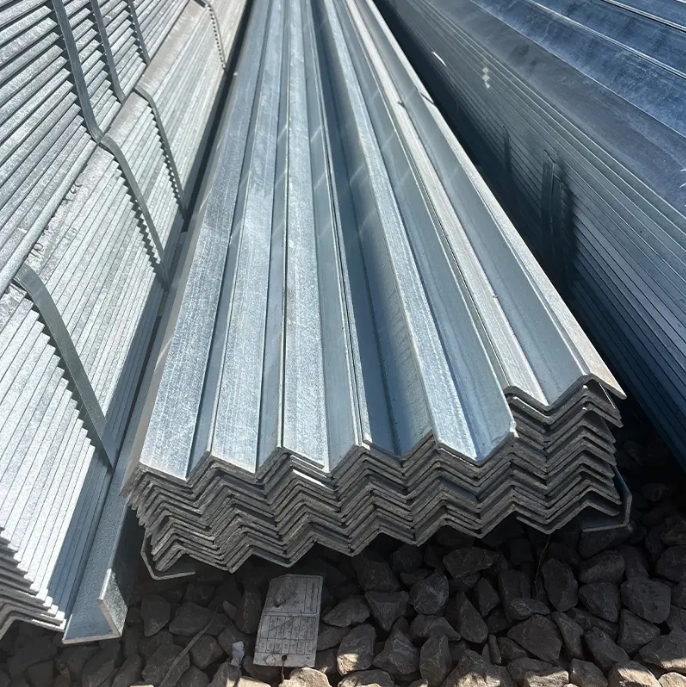
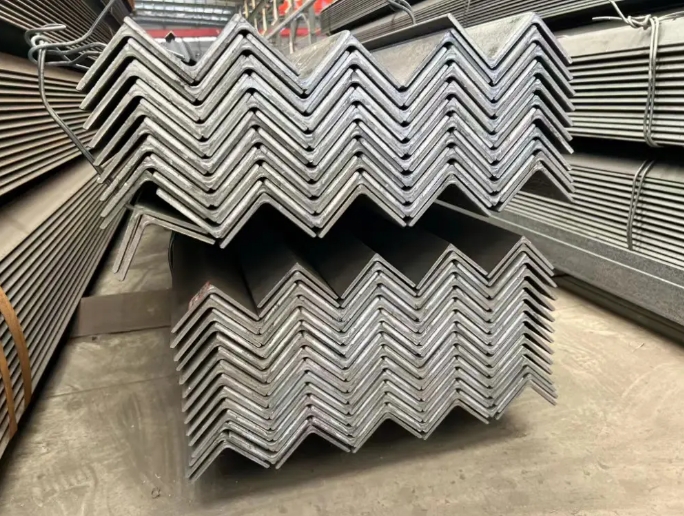
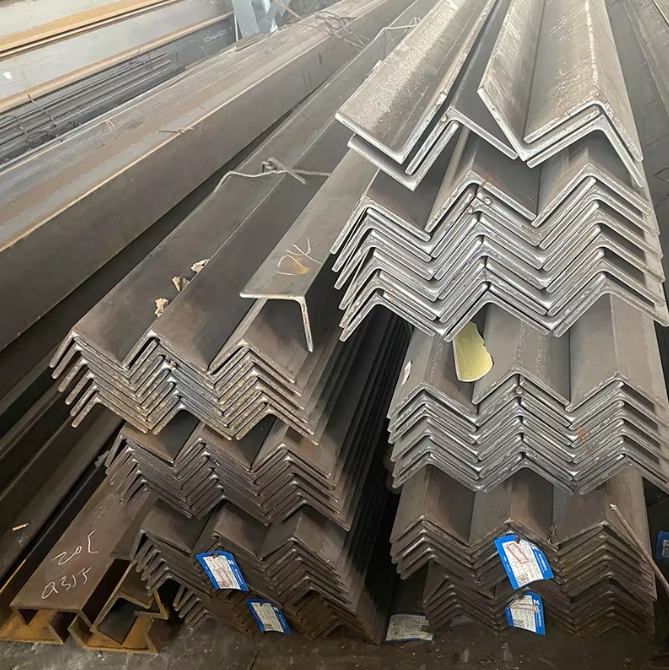

- Q: Unequal angle steel
- Unequal angle steel is a cross section, such as the letter "L", with each side of each other vertically angled and of unequal width. Its specifications are expressed in long, wide, short, wide and * thick edges, such as "L30*20*3", i.e., unequal angles with long sides, wide 30mm, short width, 20mm, and 3mm of edge thickness. Can also use the model (number) said that the model represented by a fraction, molecular side length cm wide, the denominator for the short side number of centimeters wide, such as "L3/2#", said the 3 cm long side, short side said 2 centimeters. The specifications for unequal angles are 2.5/1.6#-20/12.5#.
- Q: How do you transport steel angles?
- To ensure the safe delivery of steel angles, careful planning and proper equipment are necessary. The following guidelines can help you transport steel angles effectively: 1. Select the appropriate mode of transportation: Depending on the quantity and distance, there are various methods available for transporting steel angles, such as trucks, trailers, flatbeds, or shipping containers. Consider the dimensions and weight of the angles to determine the most suitable mode of transportation. 2. Secure the angles properly: It is essential to securely fasten the steel angles to prevent any movement during transit. Use sturdy straps, chains, or ropes to hold them in place and protect them from shifting or falling. Avoid over-tightening, as it can cause damage to the angles. 3. Implement protective measures: Steel angles are susceptible to rust and corrosion, particularly when exposed to moisture. To prevent this, consider using protective coverings like plastic wrap or tarps to shield them from rain, snow, or other environmental factors. Additionally, you can apply rust inhibitors or coatings for additional protection. 4. Ensure even weight distribution: It is crucial to distribute the weight of the steel angles evenly to avoid excessive strain on specific areas. Distribute the load evenly on the trailer or container to maintain balance and stability during transportation. 5. Proper loading and unloading: When loading and unloading steel angles, utilize appropriate lifting equipment such as cranes, forklifts, or hoists. Ensure that the equipment is capable of handling the weight and size of the angles. Follow correct lifting techniques and use specialized slings or clamps to prevent any damage during the process. 6. Obtain necessary permits and clearances: Depending on the size and weight of the steel angles and the chosen transportation method, you may need to acquire permits or clearances from relevant authorities. Check local regulations and ensure compliance to avoid any legal issues. 7. Plan the route and consider road conditions: Prior to transporting steel angles, carefully plan the route to avoid narrow roads, low bridges, or other obstacles that may hinder the safe passage of the load. Take into account road conditions, traffic congestion, and any necessary detours to ensure a smooth and secure transportation process. By adhering to these guidelines, you can transport steel angles safely and efficiently, minimizing the risk of damage and ensuring their timely delivery to the desired destination.
- Q: Are steel angles suitable for outdoor furniture?
- Yes, steel angles are suitable for outdoor furniture. Steel is a durable and weather-resistant material that can withstand various outdoor conditions, making it an excellent choice for outdoor furniture. Additionally, steel angles provide stability and structural support, ensuring the longevity and functionality of outdoor furniture pieces.
- Q: How do you determine the deflection of a steel angle?
- To determine the deflection of a steel angle, you need to consider various factors such as the material properties of the steel, the dimensions of the angle, and the applied load. The deflection of a steel angle can be determined using mathematical equations and formulas, specifically those related to structural mechanics. Firstly, you need to determine the moment of inertia (I) of the steel angle, which depends on its cross-sectional shape and dimensions. The moment of inertia represents the resistance of the angle to bending and is a crucial parameter in calculating deflection. The moment of inertia can be obtained from engineering handbooks or calculated using mathematical formulas specific to the shape of the angle. Next, you need to determine the load that is applied to the steel angle. This load can be in the form of a concentrated force, a distributed load, or a combination of both. The magnitude and distribution of the load will influence the deflection of the angle. Once you have determined the moment of inertia and the applied load, you can use the appropriate deflection equation or formula to calculate the deflection of the steel angle. The specific equation used will depend on the type of loading and the boundary conditions of the angle (e.g., whether it is simply supported or fixed at both ends). For example, if the steel angle is subjected to a concentrated load at its midpoint and is simply supported, you can use the equation for deflection of a simply supported beam under a concentrated load. This equation relates the deflection (δ) to the applied load (F), the length of the angle (L), the moment of inertia (I), and other relevant constants. It is important to note that the deflection calculated using these equations is an approximation and does not take into account factors such as material imperfections, fabrication tolerances, or the effects of dynamic loading. Therefore, it is always advisable to consult relevant design codes, standards, or engineering handbooks to ensure accurate and safe design practices when determining the deflection of a steel angle.
- Q: What are the common design codes and standards for steel angles?
- The specific application and industry requirements determine the common design codes and standards for steel angles. Various recognized design codes and standards are applicable to steel angles, including: 1. The American Institute of Steel Construction (AISC) offers design specifications and standards for structural steel construction, including angles. The AISC Steel Construction Manual provides guidance on designing steel structures and selecting steel angles. 2. The American Society for Testing and Materials (ASTM) develops and publishes technical standards for different materials, including steel. ASTM A36/A36M is a commonly referenced standard for carbon structural steel, including angles. It specifies requirements for chemical composition, mechanical properties, and testing methods. 3. The European Norm (EN) specifies technical delivery conditions for structural steel products. EN 10025-2 covers non-alloy structural steels, including angles, and provides requirements for chemical composition, mechanical properties, and tolerances. 4. The British Standards Institution (BSI) publishes standards related to steel angles, such as BS EN 10056-1. This standard details the dimensions and tolerances for hot-rolled equal and unequal steel angles. 5. The Canadian Standards Association (CSA) provides guidance for steel design and construction in Canada. CSA G40.21 is a widely used standard that covers requirements for general structural steel, including angles. It is important to note that these examples represent common design codes and standards for steel angles. Depending on the project and location, additional local or industry-specific codes and standards may need to be considered. Consulting a structural engineer or referring to relevant design codes and standards is crucial for ensuring compliance and safety in steel angle design and construction.
- Q: What is the maximum span for a steel angle?
- The maximum span for a steel angle depends on various factors, such as the size and thickness of the angle, the load it will be subjected to, and the type of support it has. Therefore, it is difficult to provide a specific answer without more information.
- Q: What are the different types of steel angles used in storage tank construction?
- Storage tank construction commonly utilizes several different types of steel angles, each serving a crucial role in providing structural support and stability. 1. L-angles, also referred to as unequal angles, find wide usage in storage tank construction. Comprising one longer and one shorter side, these angles form an L-shape. They are frequently employed as tank stiffeners, effectively preventing deformation and maintaining structural integrity. 2. T-angles, alternatively known as tee angles, represent another type of steel angle employed in storage tank construction. With a T-shape, one side is long while the other is shorter and perpendicular. T-angles often function as horizontal and vertical bracing members within tank structures, delivering added strength and stability. 3. Equal angles, also called right angles, consist of two equal sides forming a 90-degree angle. Tank construction commonly utilizes equal angles in various applications, such as providing support for tank roofs, reinforcing corners, or connecting tank components. 4. Bulb angles, or bulb flats, boast a unique shape featuring a flat surface and a bulbous section at one end. These angles are frequently employed in tank support structures, notably the tank bottom, to evenly distribute loads and minimize stress concentrations. 5. Rolled steel sections, such as I-beams, channels, and H-beams, are additionally utilized in storage tank construction alongside the aforementioned angle types. Rolled steel sections offer supplementary strength and support to tank structures, particularly in larger tanks or areas with high load requirements. In summary, the choice of steel angles in storage tank construction hinges upon specific design requirements, load considerations, and structural integrity needs. Selecting the appropriate type and size of angles is crucial to ensure tanks can withstand anticipated loads and environmental conditions.
- Q: How do steel angles provide structural support?
- Steel angles provide structural support by distributing the weight and load of a structure evenly and efficiently. They are L-shaped beams made of steel that are commonly used in construction projects. The two legs of the angle provide stability and strength, allowing it to resist bending and twisting forces. Steel angles are often used in combination with other structural components, such as beams, columns, and trusses, to create a stable framework. They can be bolted, welded, or otherwise connected to these components, providing additional support and reinforcement. The versatility of steel angles allows them to be used in a wide range of applications, from building frames and supports to bracing and reinforcing structures. By adding steel angles to a structure, it helps to distribute the weight and load more evenly across the different components, reducing the risk of structural failure. They can help to resist compressive, tensile, and bending forces, providing stability and preventing deformation under heavy loads or external forces such as wind or earthquakes. Moreover, steel angles can also be used to create connections and joints between different parts of a structure, ensuring that they are securely fastened together. This enhances the overall stability and integrity of the structure, making it more resistant to movement, vibrations, and other external factors that could compromise its safety. In summary, steel angles provide structural support by distributing weight, resisting bending and twisting forces, enhancing stability, and reinforcing connections between different structural components. Their strength, versatility, and reliability make them a popular choice in construction projects where structural integrity and stability are crucial.
- Q: How do you store and transport steel angles?
- To store and transport steel angles, it is important to follow certain guidelines to ensure their safety and prevent any damage. Here are some steps to consider: 1. Select appropriate storage location: Find a well-ventilated area that is dry, clean, and free from any moisture or chemicals that could cause corrosion. Ideally, the storage area should be indoors to protect the steel angles from the elements. 2. Organize and stack properly: Prioritize organizing the steel angles based on their size, shape, and weight. Stack them horizontally, one on top of the other, ensuring that heavier angles are placed at the bottom to avoid deformation or damage to lighter ones. Use wooden or rubber spacers between layers to prevent direct contact and minimize the risk of scratches or other surface imperfections. 3. Secure the stack: Use sturdy metal bands, straps, or chains to secure the stack of steel angles, ensuring they are tightly bound together. This will prevent any movement during transportation and reduce the risk of accidents or damage. 4. Use appropriate lifting equipment: When handling steel angles, it is crucial to use suitable lifting equipment such as cranes, forklifts, or hoists. Ensure that the equipment has the required capacity to lift the angles safely, and make sure the lifting points are evenly distributed to avoid any bending or distortion. 5. Protect against corrosion: Apply a corrosion-resistant coating or protective oil film to the steel angles before storage and transport. This will help prevent rusting and other forms of corrosion caused by exposure to moisture or environmental factors. 6. Secure packaging during transport: If the steel angles need to be transported over long distances, consider using suitable packaging materials like wooden crates or steel pallets to provide additional protection. Securely fasten the angles to the packaging to prevent any movement or shifting during transit. 7. Regular inspection: Regularly inspect the stored and transported steel angles for any signs of corrosion, damage, or deformation. If any issues are identified, take immediate action to prevent further deterioration. By following these guidelines, you can ensure the safe storage and transportation of steel angles, minimizing the risk of damage and maintaining their quality.
- Q: Can steel angles be used as structural supports?
- Indeed, structural supports can be provided by steel angles. Construction and engineering projects frequently employ steel angles due to their remarkable strength and stability. Their distinctive L-shape design renders them perfectly suited for lending support and ensuring structural integrity to various structures. Buildings, bridges, and other infrastructure projects often incorporate steel angles as beams, braces, or supports. These angles are capable of bearing heavy loads and resisting bending and compression forces, thereby establishing themselves as a dependable choice for structural support. Moreover, the ease of fabrication and installation associated with steel angles renders them a cost-effective solution for construction purposes.
Send your message to us
ms equal angle bar angle steel angle iron black galvanized angle bar
- Loading Port:
- Tianjin
- Payment Terms:
- TT OR LC
- Min Order Qty:
- 25 m.t.
- Supply Capability:
- 200000 m.t./month
OKorder Service Pledge
OKorder Financial Service
Similar products
Hot products
